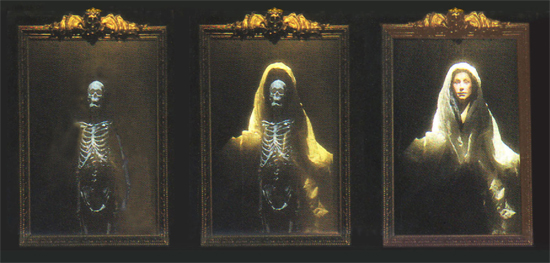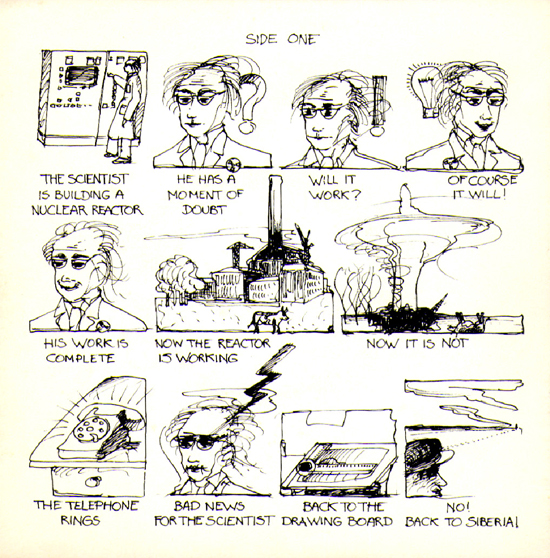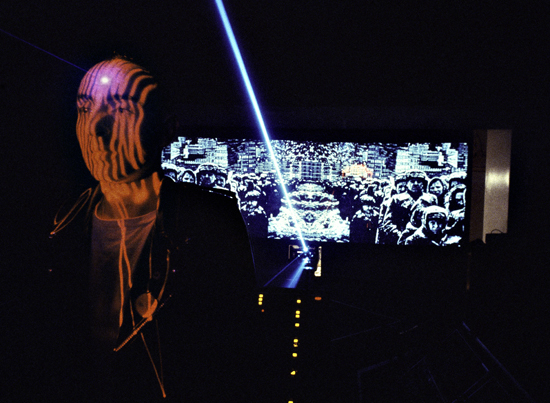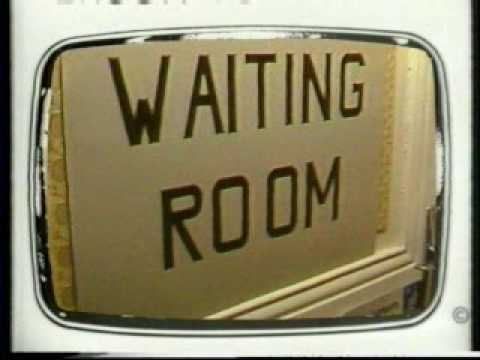"My God, the past is always jumping at my throat!" is how Bernard Szajner responds to a query about his work with Magazine’s leader Howard Devoto. It is understandable that, even though Szajner has not only sanctioned the release but exhumed two unreleased tracks for the forthcoming reissue of his 1979 album under the name Zed, Visions Of Dune, he doesn’t want to be constantly obliged to review his earlier musical experiments, particularly as he’s still so active. This is a man who invented a new instrument, the laser harp, only to rapidly abandon it (he let Jean-Michel Jarre use the idea instead), eager to move on to new projects and feeling that its appearance detracted too much from the music itself. It seems key to understanding Szajner’s outlook that he chose not to over-use this interface he had invented for his own performances. Amongst other things, it speaks of his desire for the link between sound and vision to not be purely spectacular (as has often been the case with Jarre). For Szajner, it’s all about the visual and the audible being in balance or harmony, without one subordinating itself to the other. He refers to pioneering Belgian showman Etienne Gaspard Robertson as his ‘maître’ (master).
"He was one of the first to my knowledge to combine sound and projected animated images – it is nowadays called pre-cinema – in order to create overwhelming and supernatural performances (called phantasmagoria) just before the French Revolution in 1789," he enthuses. "I could speak about this wonderful man for hours… he used sound effects created live as well as projected images on the four walls of a theatre but, most of all, his performances touched everyone because they spoke of eternal human fears."
Szajner started out creating lightshows for French ‘prog’ (for want of a better word) groups Magma and Gong, and even The Who, but says he was "unsatisfied by their lack of interest in linking strongly the image and the music, it drove me to compose the music myself." And, apparently quoting Herman Melville’s Bartleby, Szajner says "I would prefer not to… speak about the laser harp as certain names evoke bad memories. I can only say it was my first attempt at creating an instrument which I could play on stage without having to bother to learn to play on a keyboard. I soon found out that it was far too spectacular – the public just stared in awe and didn’t listen to the music – and I had to break it to pieces in what was at the time a pure rock n’ roll gesture and create more modestly visual ones. I had the idea to create the laser harp in, for me, a very logical way. I was previously creating images whilst listening to music and "illustrating" it, then why wouldn’t I create music by touching the image of an "immaterial keyboard" i.e. laser beams. Once thought, all it needed was to build it… no big deal."

Despite Szajner’s reservations, more delving into his history will inevitably follow as his stock as an electronic pioneer continues to rise among people, like myself, too young to have encountered his late 70s and 80s work in real time. My awareness started in 2004 with one of the earliest and possibly best of the French Cold Wave anthologies, Ivan Smagghe and Marc Colin’s So Young But So Cold, which featured ‘Welcome (To Deathrow)’ from 1980s Some Deaths Take Forever (aka Carl Craig’s favourite album of all time) and two tracks from Szajner’s kind-of synth-pop group The (Hypothetical) Prophets. The burgeoning interest has led to Visions of Dune – inspired, of course, by Frank Herbert’s sci-fi series – getting the Rashad Becker remaster treatment and a gorgeous new sleeve from designer Arnau Pi. Digging a bit further, you get to his work with the likes of Magma bassist Bernard Paganotti and Devoto.
"I liked Howard’s way of creating, writing, composing unusual lyrics and non-ordinary way of singing, since the Buzzcocks and I especially liked his work at the time of Magazine," says Szajner. "I was working on [1983 album] Brute Reason, and suddenly it struck me that, as I wanted someone to give a different dimension by singing on the record, it could be only him, he was "different"… And we had a great time working together for two months in Paris. One of the songs, I don’t remember which, has all kinds of apparently innocent wordplay with the word "bush" – beating around the bush, etc – a result from time spent in cafés drinking Bush beer. He is a brilliant guy who used to carry his brain in his hand…"
My interest in the Devoto connection isn’t just down to being a fan of Magazine myself, but also because I can’t help thinking the two look remarkably similar at times in photos from the era – dome-like heads, receding hairlines emphasising the forehead and temporal ridge, as if excessive hair were too much of an encumbrance to focussed mental activity; pale, sharp features injecting them bodily, boldly – and a tad baldly – into the future. However that image, somewhat austere perhaps, doesn’t really do justice to the scope of Szajner’s work, which can encompass the phat, fulsome sensuousness of Visions Of Dune as well as the flashes of sly humour that crop up, particularly in The (Hypothetical) Prophets – take ‘Person To Person’, with its cheerfully cheerless litany of personal ad kinkiness and Depeche Mode-like backing vocals.
Visions Of Dune itself is just one of many competing, or parallel, Dune-iverses. We’ve had the documentary Jodorowsky’s Dune (so at least an account of Jodorowsky’s own ‘vision’), and the soundtrack to David Lynch’s 1984 film has its own parallel version in the form of a full Brian Eno soundtrack that never was. (The Brian Eno-Dune link is not the only reason Szajner is sometimes referred to as "the French Brian Eno", but perhaps it has contributed). Klaus Schulze also produced his own Dune album in the same year as Szajner.
"Sorry to disappoint but at the time I was not aware of the Jodorowsky film except that I had heard he was planning it and severely training his son to be the hero," Szajner recalls. "As for Klaus Schulze’s album I didn’t even know it existed until now. So, I suppose my interpretation is just what it is: a sincere and amazed mind filled with awe at reading Frank Herbert’s novel."
What was the appeal of Dune, particularly as something to translate into music?
"Reading the book, I was immediately seized by images creeping up and growing in my mind, filling me with overwhelming sensations and sounds. I could almost ‘touch’ these visions. I had to find a way to ‘exorcise’ these images and sounds… It occurred at a time when I was about to start composing music and I couldn’t resist exorcising my overfilled mind by ‘translating’ the visions into music – your term ‘translate’ is quite right."
I confess I’ve never read the books, but seeing David Lynch’s divisive version, with the gloomy pomp of its Toto soundtrack, is one of my earliest memories of going to the cinema,so track titles on Visions like ‘Harkonnen’, ‘Thufir Hawat’ and ‘Gom Jabbar’ are already evocative enough. I’m not averse to Toto’s theme for Lynch’s film either but, in his eschewing of classical orchestration, Szajner naturally created something more in tune with the fabric of science fiction (two tracks were left off the album because his label apparently considered them "too futuristic"). The loops that form the basis of the album relied both on advanced technologies and a speculative approach, and the notions of repetition and minimalism were gleaned from Terry Riley, but the process also anticipates techno and house. Loops were made using a loaned Oberheim sequencer and two-track Revox recorder, before being paired up on an Akai four-track to see how they sounded running together. Later, more conventional (though often heavily treated) elements were added in a multi-track studio in London – voices, drums (tight, funky patterns from Magma’s Clement Bailly) and guitar.
Although vinyl imposed a break in the flow, the album was conceived as a continuous sequence, with Szajner wanting to reflect a novel’s "continuity of words, which form a continuity of sentences, which together form the continuity of the story." He also talks about "choosing the sound, notes and tempo of the loop helped to form the mental impression of a character, a situation or a concept". In his ‘vision’, then, it’s as if he’s in orbit around the planet Arrakis, his view regularly telescoping to focus in on another person or an aspect of the planet’s life before moving on.
How does Szajner feel now about its continued relevance or otherwise?
"For me Visions Of Dune is not as exciting as it is for many others, I suppose I heard it too many times, I respect some people’s admiration for it but I’m not overexcited myself as I suppose I should be by the thrill it seems to trigger. I do accept, however, that it is an opportunity for a much younger audience to discover me through that record and to expect what I compose nowadays… in that sense, it makes… sense."
https://www.youtube.com/watch?v=wT1l8g9IIuc
After Visions came the dark-but-lush industrialism of Some Deaths Take Forever, which has recently featured in FACT’s Best 100 Albums of the 1980s. It was dedicated to Amnesty International – ‘Death Row’ tackles the death penalty, and there is an overriding theme of man’s inhumanity to man. I’m intrigued about the room there is in Szajner’s work for the wit of The (Hypothetical) Prophets and also, let’s say, ‘heavy’ themes like these.
"I am naturally attracted to heavy and rather sombre compositions – I was born in a dark cave with bloodthirsty bugs creeping all over the baby I was… So when Amnesty International asked me to compose a music for a short film against the death penalty (the death penalty still existed in France at that time) it was a good excuse for me to create some very anguishing music. Amnesty liked it and asked me if I would produce some more, which I did, combining the music as two visions and the album was born… As for ‘Person To Person’ and other "Prophetical" music’s "wit" as you say, I enjoy the radically other side of life, the "light" side that I can enjoy without feeling too guilty. I suspect that an artist is someone who looks at life and is capable of seeing the happy sides without avoiding to look at the dark ones…"
With The (Hypothetical) Prophets (who released an album in 1983 called Around the World with The (Hypothetical) Prophets) the intention seems to be largely satirical, slyly mocking consumerist mores, or creeping globalisation, until you come across the more genuinely nightmarish likes of ‘Wallenberg’.
"It relates to my view of being an artist and yet being able to be sarcastic, not to be serious as if I should be an example, a model to the world. I was working with Karel Beer, an Englishman living in Paris. He was working with me as a producer. One day a nuclear problem occurred in the USA in a nuclear plant in Pennsylvania at Three Mile Island. We saw it in the newspaper and talked about it, and as we had a slightly mischievious view of the situation in USSR we imagined that, had it happened on the other side of the Berlin Wall, the engineer who was in charge would have been sent right away to a Gulag – how caricatural can you get. We decided to transform this idea into music, so I composed two pieces with a minimal sound that made me think of someone playing a cheap synth in a Moscow cave. We brought into the studio a real Russian, and recorded him telling the story of how he had built the Russian nuclear plant, how it has failed, and how he was sent to gulags all over Siberia…

"It so happens that this was many years before Chernobyl but the KGB had at the time a bad reputation, so we decided to be anonymous, taking pseudonyms (Norman D. Landing for Karel and Joe Veil for myself)," he continues. "The Prophets were born and we continuously amused ourselves by using somber subjects – ‘Wallenberg’ – or critical ones or, as you say "slyly mocking consumerist mores" – ‘Fast Food’ – or creeping globalisation (‘I Like Lead’) or ones we thought simply funny (‘Person to Person’). InFiné, the French label re-issuing Visions, tell me that nowadays, some groups sound just like the Prophets. I have no idea, I never listen to music… really? Really!"
That album with Devoto and other guests including Paganotti features a track called ‘The Snark’, but Szajner’s website hosts unreleased tracks "recorded using the Snark" which suggests it was one of those more "modestly visual" instruments he created… "The Snark is indeed a musical instrument," he confirms. "The name is borrowed from Lewis Carroll’s The Hunting of the Snark, an imaginary monster that you encounter at your own risk. I wanted an instrument that could be used "by the body" to extend the possibilities of synthesisers, an instrument void of the limitations of a standard keyboard, an instrument with a "mind" of its own… It didn’t exist, so I had to create it… it actually controls a PPG Wave 2 synthesiser, one of the most beautiful and unusual sounding machines I ever heard."
One current project, an audio-visual installation called Evolution, will be at Paris’s modern art mecca, the Centre Pompidou, in September. It sounds as though it may be a summation of his preoccupations with sound and visuals.
"Every new project is the opportunity to explore new ways, new paths, new instruments, new visions and new music," he says. "Evolution is… an evolution in my work. It is not a concert, it is a performance where I use music, visions and two new instruments in the shape of an installation to combine all of these artefacts to – hopefully – bring the public along with me into a new dimension, a road not taken. For this purpose the instruments I am currently building are imagined as two ‘yōkaï’, two Japanese monsters or demons, one named Akateko, the other, named Mikoshi Nyudo, because you play differently with demons than you would play with instruments."
Another new project for Ircam (Institut de Recherche et Coordination Acoustique/Musique – "the French ‘temple’ of contemporary music" as Szajner calls it) sees him hooking up with Carl Craig. It’s a well known story now, of how European electronic music influenced predominantly black house and techno artists – an inverse of what happened with the blues – but is the interest of the likes of Carl Craig still a source of surprise or pleasure?
"Sometimes…" he says. "I spent a couple of hours with Carl Craig last week and I suspect it was interesting for both of us, especially as we were on common ground, discovering some of the most advanced and exciting sound software produced by the Ircam. We were children let loose in a candy store… Carl mentioned that when he listened to my music years ago in his basement he was with Genesis P-Orridge from Throbbing Gristle, and they were both extremely impressed because they perceived it like music from a different era. I suppose that it is at that time that he put me as number one of his "all-time top ten" chart in a glossy magazine along with Kraftwerk, Public Enemy and Stevie Wonder."
Going back to work like The (Hypothetical) Prophets or Visions Of Dune, they seem prescient in a way, but there’s also a relative innocence, perhaps related to the era and the feeling that old rules could still be broken, new paradigms created. Is the future how Szajner thought it would be?
"My view of life doesn’t change much with time, and I must admit the future is always a mysterious road I should take someday if I am brave enough. I am still a child who loves to blur people’s minds, like the illusionist making magic tricks I was at ten years old, and there are still rules to break and new paradigms to create. But I must refrain myself from going too far into conceptual forms of creation, because of the risk of becoming an abstract entity unable to communicate, even more paranoid than I am already. I still feel myself as an innocent most of the time, but I don’t wish to be discovered in 35 years for the music I create today – I wouldn’t be able to see the results!"
For more from Rockfort, you can visit the official site here and follow them on Twitter. To get in touch, email info@rockfort.info.



